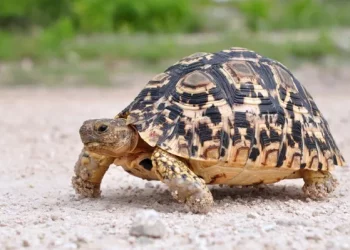Keeping your tortoise warm at night is crucial for its health and well-being, especially since tortoises are ectothermic creatures that rely on external heat sources to regulate their body temperature. This comprehensive guide explores various methods and considerations to help you provide the best nighttime heating setup for your tortoise.
Understanding Tortoise Heating Needs
Ectothermy in Tortoises
Tortoises, like other reptiles, are ectothermic, meaning they cannot generate their own body heat internally. Instead, they rely on external sources of heat, such as sunlight and artificial heating elements, to maintain their body temperature within a suitable range. Proper heating is essential not only for digestion and metabolism but also for overall health and activity levels.
Ideal Temperature Range
Different species of tortoises have varying temperature requirements based on their natural habitat. Generally, nighttime temperatures should not drop below certain thresholds to prevent health issues such as respiratory infections or metabolic slowdown. It’s crucial to research the specific temperature range recommended for your tortoise species.
Setting Up Nighttime Heating
Heat Sources for Nighttime
Ceramic Heat Emitters (CHEs): Ceramic heat emitters are effective for providing nighttime heat without emitting light. They produce infrared heat, which warms the air and surfaces in the enclosure. Place the CHE over one end of the enclosure to create a temperature gradient, allowing your tortoise to choose the ideal temperature zone.
Heat Mats or Heat Pads: Under-tank heat mats or heat pads can be used to provide gentle warmth from below. These are particularly useful for species that benefit from belly heat, such as desert tortoises. Ensure the heat mat covers only a portion of the enclosure floor to allow for temperature variation.
Radiant Heat Panels: Radiant heat panels are mounted on the ceiling of the enclosure and emit infrared heat similar to the sun. They provide consistent warmth throughout the night and can be adjusted to maintain the desired temperature gradient.
Monitoring Temperature
Thermometers: Use digital thermometers with probes to monitor temperatures accurately. Place thermometers at both the warm and cool ends of the enclosure to ensure the entire habitat provides a suitable temperature gradient.
Thermostats: Pair heating elements with thermostats to regulate temperatures automatically. Thermostats maintain consistent temperatures by controlling when heating devices turn on and off, ensuring your tortoise’s enclosure remains within the optimal temperature range.
Creating a Comfortable Habitat
Substrate Considerations
Substrate Choice: Choose substrates that retain heat well, such as orchid bark, coconut coir, or a mixture of soil and sand. Avoid substrates that conduct heat poorly or retain excessive moisture, as these can lead to health issues like shell rot.
See Also: What Do Land Tortoises Eat?
Depth and Coverage: Provide enough substrate depth for burrowing, as many tortoise species enjoy burrowing to regulate their body temperature. Ensure substrate coverage is uniform throughout the enclosure to maintain consistent warmth.
Shelter and Hideouts
Hideouts: Offer multiple hideouts or shelters within the enclosure where your tortoise can retreat to regulate its temperature and feel secure. Use hideouts made of non-toxic materials like wood or plastic, ensuring they are sturdy and well-ventilated.
Nighttime Security: Tortoises may become stressed if exposed to bright lights at night. Use red or blue nocturnal bulbs or LED lights with dimmers to provide subtle nighttime lighting if necessary. Avoid using bright white lights, as these can disrupt your tortoise’s natural sleep patterns.
Additional Tips for Nighttime Care
Humidity Control
Humidity Levels: Some tortoise species require specific humidity levels to thrive. Ensure humidity levels are monitored and adjusted accordingly using a hygrometer. Mist the enclosure lightly if needed, but avoid creating excessively damp conditions.
Seasonal Adjustments
Seasonal Changes: Tortoises may require adjustments to their nighttime heating setup during different seasons. Monitor ambient temperatures and make necessary adjustments to maintain consistent nighttime temperatures within the enclosure.
Veterinary Care
Regular Check-ups: Schedule regular veterinary check-ups to ensure your tortoise remains healthy and to address any concerns related to temperature regulation or overall well-being.
Conclusion
Providing adequate nighttime heating for your tortoise is essential for maintaining its health, comfort, and natural behaviors. By understanding your tortoise’s heating requirements, selecting appropriate heating sources, and creating a comfortable habitat, you can ensure your pet thrives in its enclosure. Regular monitoring of temperatures, humidity levels, and seasonal adjustments will help you create a stable environment where your tortoise can thrive for years to come. Remember, each tortoise species may have unique needs, so tailor your nighttime heating setup accordingly to meet those specific requirements.
Related Topics:

























